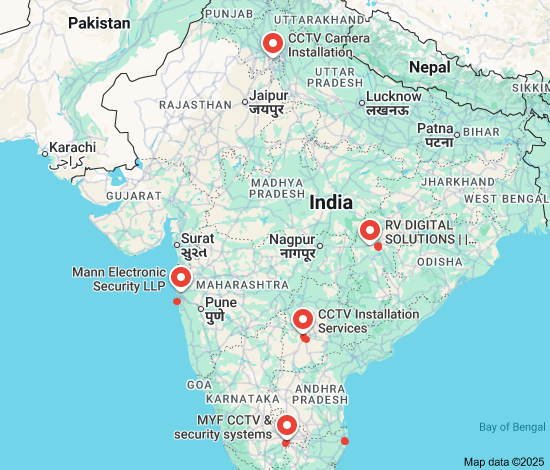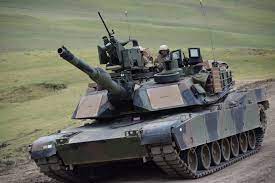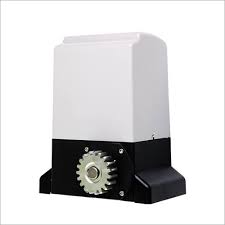Installing a CCTV system is a crucial step towards enhancing security and surveillance in both residential and commercial settings. Proper CCTV fitting not only deters potential intruders but also provides valuable evidence in case of any untoward incidents.
Before beginning the CCTV fitting process, it is essential to conduct a thorough assessment of the premises to determine the optimal camera placements. Factors such as entry points, vulnerable areas, and blind spots should be taken into consideration to ensure comprehensive coverage.
The next step involves selecting the right type of cameras for the specific surveillance needs. Options range from dome cameras for indoor monitoring to bullet cameras for outdoor surveillance. Additionally, features like night vision, motion detection, and pan-tilt-zoom capabilities can further enhance the effectiveness of the CCTV system.
Once the cameras are chosen, it is time to mount them securely at strategic locations. Proper positioning is key to maximizing coverage while minimizing blind spots. Cameras should be installed at a height that provides a clear view of the area without being easily tampered with or obstructed.
In addition to camera placement, attention should also be given to cable management during CCTV fitting. Cables should be neatly concealed to prevent tampering and ensure a clean aesthetic appearance. Using weatherproof enclosures for outdoor cables can help protect them from environmental elements.
After mounting the cameras and connecting them to the central recording unit, it is essential to test the system thoroughly to ensure all cameras are functioning correctly and capturing clear footage. Adjustments may need to be made based on test results to optimize camera angles and settings.
Regular maintenance and monitoring are crucial once the CCTV system is fitted. Periodic checks should be conducted to ensure all components are in working order, including cleaning lenses, checking connections, and reviewing recorded footage for any suspicious activities.
In conclusion, proper CCTV fitting plays a vital role in enhancing security measures by providing continuous surveillance and recording capabilities. By following best practices in camera placement, selection, installation, and maintenance, individuals and businesses can effectively safeguard their premises against potential threats.
Essential FAQs for Effective CCTV Installation and Maintenance
- What are the key factors to consider before installing a CCTV system?
- What type of cameras are suitable for indoor surveillance?
- How can I determine the optimal placement of CCTV cameras in my premises?
- Do CCTV cameras require professional installation, or can I set them up myself?
- What features should I look for in a CCTV system for enhanced security?
- Are there any legal considerations or regulations to be aware of when fitting CCTV cameras?
- How do I maintain and troubleshoot my CCTV system to ensure optimal performance?
What are the key factors to consider before installing a CCTV system?
Before installing a CCTV system, several key factors need to be carefully considered to ensure its effectiveness in enhancing security measures. Firstly, conducting a thorough assessment of the premises to identify critical areas requiring surveillance is essential. Factors such as entry points, blind spots, and high-risk zones should be taken into account for optimal camera placement. Secondly, selecting the right type of cameras based on the specific surveillance needs and environment is crucial. Features like resolution, night vision capabilities, and weatherproofing should be considered to ensure reliable performance. Additionally, factors such as recording storage capacity, remote viewing options, and compliance with data protection regulations should also be evaluated before installing a CCTV system.
What type of cameras are suitable for indoor surveillance?
When it comes to indoor surveillance, selecting the right type of cameras is crucial to ensure effective monitoring and security. Dome cameras are a popular choice for indoor settings due to their discreet design and wide viewing angles. These cameras are typically ceiling-mounted and offer 360-degree coverage, making them ideal for monitoring large areas such as lobbies, hallways, or retail spaces. Additionally, dome cameras are tamper-resistant and can blend seamlessly into the surroundings, making them less conspicuous to potential intruders. Their versatility and high-quality video output make dome cameras a suitable option for indoor surveillance applications where comprehensive coverage and discreet monitoring are essential.
How can I determine the optimal placement of CCTV cameras in my premises?
Determining the optimal placement of CCTV cameras in your premises requires a strategic approach to maximize coverage and effectiveness. Start by conducting a thorough assessment of your property, identifying key areas that require surveillance such as entry points, high-traffic areas, and valuable assets. Consider potential blind spots and vulnerabilities that intruders could exploit. Position cameras at strategic locations with a clear line of sight, ensuring they cover critical areas without obstructions. Adjust camera angles to capture the desired field of view while minimizing unnecessary footage. Additionally, consult with security professionals or CCTV installation experts for guidance on ideal camera placements based on your specific security needs and property layout. Regularly evaluate and adjust camera positions as needed to maintain optimal surveillance coverage.
Do CCTV cameras require professional installation, or can I set them up myself?
When it comes to CCTV fitting, the question of whether professional installation is necessary often arises. While some individuals may opt to set up CCTV cameras themselves to save on installation costs, it is generally recommended to seek professional assistance. Professional installers have the expertise and experience to ensure that cameras are positioned correctly, cables are neatly managed, and the system functions optimally. They can also provide guidance on selecting the right cameras for specific surveillance needs and offer valuable insights on maintenance and troubleshooting. Ultimately, investing in professional installation can help ensure that your CCTV system operates effectively and provides reliable security coverage for your premises.
What features should I look for in a CCTV system for enhanced security?
When selecting a CCTV system for enhanced security, several key features should be considered to ensure optimal surveillance capabilities. Firstly, high-resolution cameras are essential for capturing clear and detailed footage, enabling easy identification of individuals and activities. Night vision functionality is crucial for round-the-clock monitoring, providing visibility in low-light conditions. Motion detection technology can alert users to any suspicious movements, triggering immediate action. Remote viewing and mobile app integration allow for real-time monitoring from anywhere, enhancing convenience and accessibility. Additionally, cloud storage options ensure secure data backup and retrieval in case of system failure or tampering. By prioritizing these features in a CCTV system, users can significantly bolster their security measures and peace of mind.
Are there any legal considerations or regulations to be aware of when fitting CCTV cameras?
When fitting CCTV cameras, it is crucial to be aware of legal considerations and regulations to ensure compliance with privacy laws and guidelines. In many regions, there are specific rules governing the use of surveillance cameras, such as obtaining consent from individuals being recorded, displaying signage indicating the presence of CCTV cameras, and restricting the use of cameras in certain private areas. Failure to adhere to these regulations can result in legal consequences and penalties. Therefore, it is essential to research and understand the local laws related to CCTV installation and operation before proceeding with fitting cameras to avoid any potential issues.
How do I maintain and troubleshoot my CCTV system to ensure optimal performance?
To maintain and troubleshoot your CCTV system for optimal performance, regular upkeep is essential. Start by inspecting all camera lenses for dirt or obstructions and clean them as needed to ensure clear footage. Check the connections and cables for any signs of wear or damage, replacing them if necessary to prevent signal loss. Regularly review recorded footage to identify any anomalies or issues that may indicate a problem with the system. Conduct routine tests of motion detection, night vision, and remote viewing capabilities to ensure they are functioning correctly. In case of any technical issues, refer to the user manual for troubleshooting steps or contact a professional CCTV technician for assistance in diagnosing and resolving the problem promptly. By staying proactive in maintenance and addressing issues promptly, you can ensure that your CCTV system operates at its best performance level consistently.



